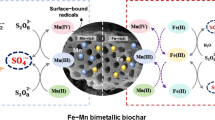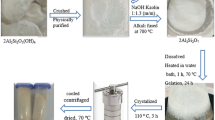Abstract
This study investigated the cotransport behaviors of graphene oxides (GO) and reduced graphene oxides (RGO) with bisphenol A (BPA) in porous media in both NaCl (1 and 10 mmol/L) and CaCl2 solutions (0.5 and 1.5 mmol/L) at pH 6.5. Both bare and iron oxides-coated quartz sand were employed as porous media in present study. We found that under all examined solution conditions, the presence of BPA (100 µ/L) did not have obvious influence on the transport of both GO and RGO (8 mg/L as TOC) in both bare and iron oxides-coated quartz sand. Although the dissolved BPA was the major form dominating the transport behaviors of total BPA in the presence of GO/RGO, yet the GO/RGO-associated BPA (due to the adsorption of BPA onto GO/RGO surfaces) also had some contribution to the transport of total BPA in the presence of GO/RGO in two types of porous media. Overall, due to the different transport behaviors of GO and RGO under different solution conditions, we found that the presence of GO/RGO decreased the transport of total BPA under all examined solution conditions in two types of porous media with the smallest decrease in 1 mmol/L NaCl solutions and the largest in 1.5 mmol/L CaCl2 solutions. The results of this study clearly indicated that when BPA was co-present with GO/RGO, the transport behaviors of GO/RGO in porous media would have great influences on the fate and transport of BPA in natural environments due to their adsorption onto GO/RGO.
Similar content being viewed by others
References
Peng S, Wu D, Ge Z, et al. Influence of graphene oxide on the transport and deposition behaviors of colloids in saturated porous media. Environ Pollut, 2017, 225: 141–149
Huang X, Yin Z, Wu S, et al. Graphene-based materials: Synthesis, characterization, properties, and applications. Small, 2011, 7: 1876–1902
Dreyer D R, Park S, Bielawski C W, et al. The chemistry of graphene oxide. Chem Soc Rev, 2010, 39: 228–240
Qi Z, Hou L, Zhu D, et al. Enhanced transport of phenanthrene and 1-naphthol by colloidal graphene oxide nanoparticles in saturated soil. Environ Sci Technol, 2014, 48: 10136–10144
Rahimi E, Mohaghegh N. Removal of toxic metal ions from sungun acid rock drainage using mordenite zeolite, graphene nanosheets, and a novel metal-organic framework. Mine Water Environ, 2016, 35: 18–28
Zhou D D, Jiang X H, Lu Y, et al. Cotransport of graphene oxide and Cu(II) through saturated porous media. Sci Total Environ, 2016, 550: 717–726
Xu J, Zhu Y F. Elimination of bisphenol A from water via graphene oxide adsorption. Acta Physico-Chimica Sin, 2013, 29: 829–836
Xu J, Wang L, Zhu Y F. Decontamination of bisphenol A from aqueous solution by graphene adsorption. Langmuir, 2012, 28: 8418–8425
Sun W, Wang C, Pan W, et al. Effects of natural minerals on the adsorption of 17β-estradiol and bisphenol A on graphene oxide and reduced graphene oxide. Environ Sci-Nano, 2017, 4: 1377–1388
Ge Z, Wu D, He L, et al. Effects of graphene oxides on transport and deposition behaviors of bacteria in saturated porous media. Sci China Tech Sci, 2019, 62: 276–286
Zakari S, Liu H, Tong L, et al. Transport of bisphenol-A in sandy aquifer sediment: Column experiment. Chemosphere, 2016, 144: 1807–1814
Xue J, Kannan P, Kumosani T A, et al. Resin-based dental sealants as a source of human exposure to bisphenol analogues, bisphenol A diglycidyl ether, and its derivatives. Environ Res, 2018, 162: 35–40
Staples C A, Dome P B, Klecka G M, et al. A review of the environmental fate, effects, and exposures of bisphenol A. Chemosphere, 1998, 36: 2149–2173
Rochester J R. Bisphenol A and human health: A review of the literature. Reprod Toxicol, 2013, 42: 132–155
Chen M Y, Ike M, Fujita M. Acute toxicity, mutagenicity, and estrogenicity of bisphenol-A and other bisphenols. Environ Toxicol, 2002, 17: 80–86
Cao F M, Bai P L, Li H C, et al. Preparation of polyethersulfone-organophilic montmorillonite hybrid particles for the removal of bisphenol A. J Hazard Mater, 2009, 162: 791–798
Rathnayake S I, Xi Y, Frost R L, et al. Environmental applications of inorganic-organic clays for recalcitrant organic pollutants removal: Bisphenol A. J Colloid Interface Sci, 2016, 470: 183–195
Wu Z S, Wei X H, Xue Y T, et al. Removal effect of atrazine in co-solution with bisphenol A or humic acid by different activated carbons. Materials, 2018, 11: 2558–2571
Wu D, He L, Sun R, et al. Influence of bisphenol A on the transport and deposition behaviors of bacteria in quartz sand. Water Res, 2017, 121: 1–10
Xu X, Wang Y, Li X. Sorption behavior of bisphenol A on marine sediments. J Environ Sci Health Part A, 2008, 43: 239–246
Guex L G, Sacchi B, Peuvot K F, et al. Experimental review: Chemical reduction of graphene oxide (GO) to reduced graphene oxide (rGO) by aqueous chemistry. Nanoscale, 2017, 9: 9562–9571
Chowdhury I, Duch M C, Mansukhani N D, et al. Colloidal properties and stability of graphene oxide nanomaterials in the aquatic environment. Environ Sci Technol, 2013, 47: 6288–6296
Qi Y, Xia T, Li Y, et al. Colloidal stability of reduced graphene oxide materials prepared using different reducing agents. Environ Sci-Nano, 2016, 3: 1062–1071
A Lerf, H.Y He, M Forster, et al. Structure of graphite oxide revisited. J Phys Chem B, 1998, 102: 4477–4482
Xia T, Fortner J D, Zhu D, et al. Transport of sulfide-reduced graphene oxide in saturated quartz sand: Cation-dependent retention mechanisms. Environ Sci Technol, 2015, 49: 11468–11475
Dikin D A, Stankovich S, Zimney E J, et al. Preparation and characterization of graphene oxide paper. Nature, 2007, 448: 457–460
Kapetas L, Ngwenya B T, Macdonald A M, et al. Thermodynamic and kinetic controls on cotransport of Pantoea agglomerans cells and Zn through clean and iron oxide coated sand columns. Environ Sci Technol, 2012, 46: 13193–13201
Dong Z, Yang H, Wu D, et al. Influence of silicate on the transport of bacteria in quartz sand and iron mineral-coated sand. Colloids Surfs B-Biointerfaces, 2014, 123: 995–1002
Luo X, Wu D, Liang J, et al. Influence of typical anions on the transport of titanium dioxide nanoparticles in iron oxide-coated porous media. Acta Sci Nat Univ Pekinensis, 2017, 53: 749–757
Li T, Lin D, Li L, et al. The kinetic and thermodynamic sorption and stabilization of multiwalled carbon nanotubes in natural organic matter surrogate solutions: The effect of surrogate molecular weight. Environ Pollut, 2014, 186: 43–49
Fang J, Wang M, Shen B, et al. Distinguishable co-transport mechanisms of phenanthrene and oxytetracycline with oxidized-multi-walled carbon nanotubes through saturated soil and sediment columns: Vehicle and competition effects. Water Res, 2017, 108: 271–279
Wang M, Gao B, Tang D, et al. Concurrent aggregation and transport of graphene oxide in saturated porous media: Roles of temperature, cation type, and electrolyte concentration. Environ Pollut, 2018, 235: 350–357
Park S, Lee K S, Bozoklu G, et al. Graphene oxide papers modified by divalent ions—Enhancing mechanical properties via chemical cross-linking. ACS Nano, 2008, 2: 572–578
He J, Wang D, Zhou D. Transport and retention of silver nanoparticles in soil: Effects of input concentration, particle size and surface coating. Sci Total Environ, 2019, 648: 102–108
Chowdhury I, Mansukhani N D, Guiney L M, et al. Aggregation and stability of reduced graphene oxide: Complex roles of divalent cations, pH, and natural organic matter. Environ Sci Technol, 2015, 49: 10886–10893
Chen J Y, Ko C H, Bhattacharjee S, et al. Role of spatial distribution of porous medium surface charge heterogeneity in colloid transport. Colloids Surfs A-Physicochem Eng Aspects, 2001, 191: 3–15
Han P, Wang X, Cai L, et al. Transport and retention behaviors of titanium dioxide nanoparticles in iron oxide-coated quartz sand: effects of pH, ionic strength, and humic acid. Colloids Surfs A-Physicochem Eng Aspects, 2014, 454: 119–127
Author information
Authors and Affiliations
Corresponding author
Additional information
This work was supported by the National Natural Science Foundation of China (Grant Nos. 21377006 and 40971181).
Electronic supplementary material
Rights and permissions
About this article
Cite this article
Liu, X., Li, M., Liu, F. et al. Cotransport of graphene oxides/reduced graphene oxides with BPA in both bare and iron oxides coated quartz sand. Sci. China Technol. Sci. 62, 1896–1906 (2019). https://doi.org/10.1007/s11431-019-9512-0
Received:
Accepted:
Published:
Issue Date:
DOI: https://doi.org/10.1007/s11431-019-9512-0




